Africa. Alternative Energies.
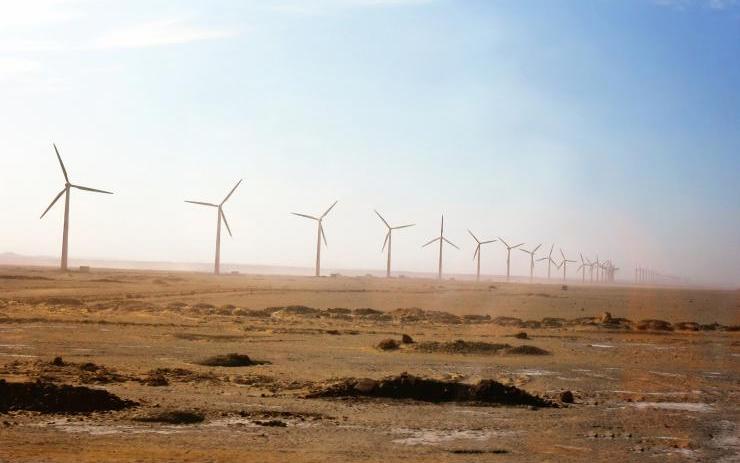
Many African governments continue to focus on fossil fuels. And, despite enormous potential, investment in renewable sources by multinationals is not taking off.
The next international climate conference is scheduled in Dubai from 30 November until December 12th.
Over the past two decades of the $2.8 trillion invested globally in renewable energy, only 2% has gone to projects in African countries. Despite Africa’s enormous potential in this sector, for the investments that matter, the oil and gas multinationals prefer to play it safe, financing mega-projects in Europe, North America and the Persian Gulf and allocating to the African continent – mainly to South Africa and states of the Maghreb – what remains of their budget.
The result is that the solar and wind sectors in which Africa should have made important steps forward some time ago, today do not cover even 10% of the clean energy capacity expressed by the continent.
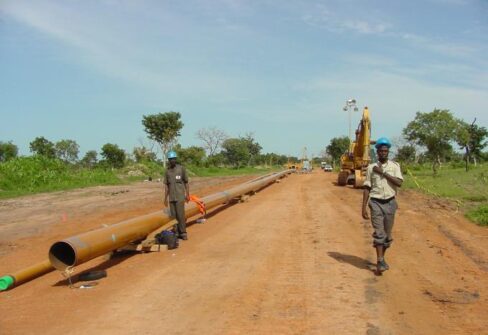
African governments continue to focus on fossil fuels. File Swm
A reversal of this trend, although much more contained than expected, nevertheless occurred. In Nigeria, at the end of 2022, Shell completed the acquisition of the local solar energy producer Daystar Power in view of the start-up of a 400-megawatt (mW) project in the country. France’s Total is investing in the development of photovoltaic parks in Egypt, Burkina Faso, and Uganda. In Kenya, the Italian Eni has created an agri hub connected to its biorefinery in Gela and intends to replicate the model in Congo, Angola, Mozambique, Ivory Coast, and Rwanda.
Foreign investments in renewables in Africa, however, are not taking off, and there are a series of reasons behind this stalemate. The first concerns local networks for energy transmission. Especially in sub-Saharan countries these networks are obsolete and unable to absorb and manage large quantities of electricity deriving from intermittent renewable sources, such as wind and solar. Another factor that makes the African market unattractive is the absence of real competition on the continent. State-owned companies often represent the only customers for independent energy producers. This makes these private realities hostage to the choices of governments which, for their part, prove to be little or not at all inclined to abandon direct assignments in favour of transparent auctions for the assignment of supply services.
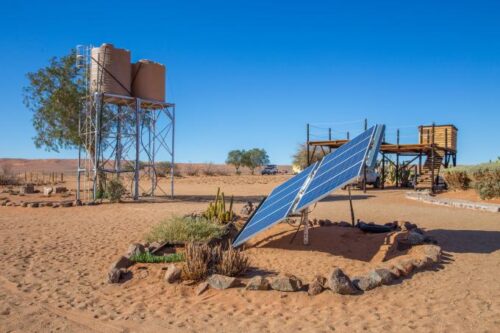
Solar panel in the Farm Gunsbewys, in southern Namibia. 123rf
The continuation of this established system is facilitated by antiquated regulatory frameworks which tend to hinder rather than incentivize private investment in the sector. To hope for a leap in quality, in addition to relying on financing and loans from bodies such as the World Bank and the African Development Bank, African countries must “create favourable environments for investment through innovative financing tools such as peer-to-peer trading (trading without intermediaries) or the pay-as-you-go model, auctions and all-inclusive tariffs in more solid and stronger regulatory frameworks than government guarantees” explains Nivedh Das Thaikoottathil, renewables & power analyst at Rystad Energy, an independent energy research company based in Oslo.
And he continues: “We also need more transparency on the part of governments, a more extensive liberalization of the energy sector, with greater participation of the private sector, and the modernization of networks and infrastructures for the transmission and distribution of electricity”.However, something has changed in the last decade. A progressive liberalization of the electricity market began in Ghana in 2011 and in Côte d’Ivoire in 2014. In Benin a law in this direction was introduced in 2020. But the continent continues to travel at double speed in the race for renewables. Those countries in which the big oil & gas companies know they can invest in large projects with a certain level of security remain firmly in the lead. Nivedh continues: “75% of investments in the last decade have gone to South Africa, Egypt, Morocco, and Kenya. These countries are chosen for the most favourable risk-return ratio, the stability of their domestic markets, political reforms and rapidly falling prices of renewables”.
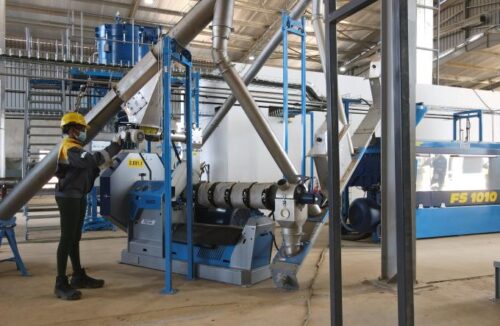
Eni’s agri-hub, Wote, Makueni County. Courtesy: Eni
For the installation of a wind farm in South Africa, for example, there are convenient conditions, comparable to those of Finland and Portugal. And prices are even lower in Egypt and Morocco. Due to its characteristics – availability of large spaces, sun, and water sources – North Africa is the region that is doing the most on the hydrogen front. But although African clean energy is becoming increasingly competitive in terms of costs, the exploitation of fossil fuels continues to be considered more advantageous by African governments.
More than the long-term solutions proposed by choices oriented towards the use of renewable sources, the majority of the continent’s heads of state aim to immediately obtain the most from the oil and gas deposits at their disposal.
In Uganda, President Yoweri Museveni is the most influential sponsor of the East African Crude Oil Pipeline Project, the pipeline that will connect his country to Tanzania and allow efficient marketing of crude oil. In Ivory Coast, Alassane Ouattara is looking to the Beeline offshore fields to give a boost to the national economy. Nigerian President Bola Tinubu has declared that he wants to double the country’s crude oil production, which is already among the top African producers. Senegal and Mauritania are aiming for the GTA (Greater Tortue Ahmeyim) project for the offshore extraction of natural gas.
Among the issues at the centre of the latest United Nations Conference on Climate Change – Cop27 in Sharm El Sheikh, Egypt, 6-18 November 2022 – was the development of the carbon credit market, i.e., financial securities equivalent to one ton of CO2 not emitted or absorbed thanks to environmental protection projects. There are currently over 200 projects around the world focused on the use and development of CCS (carbon capture and storage) technologies for the capture and storage of carbon dioxide. The African continent itself stands out as one of the most sought-after destinations for energy multinationals to invest in compensation projects.
In May 2022, Italy’s Eni announced a $25 million investment to support the Egyptian government in implementing a pilot project for the capture and storage of carbon dioxide in the Meleiha gas field.
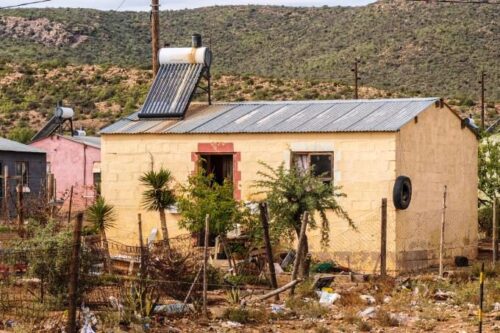
South Africa. A house with a solar geyser in a township in Willowmore in the Eastern Cape Province. 123rf
In 2021, the government of Congo and the French Total and Forêt Ressources Management signed a partnership agreement to create a 40,000-hectare forest on the Batéké plateaus through which the aim is to absorb over 10 million tonnes of CO2 in twenty years. Also in 2021, Shell and C-Quest Capital launched a project to distribute electric hobs to 1.5 million families living in villages spread across Malawi, Zambia, Zimbabwe, Mozambique, Uganda, and Kenya and thus generate 60 million carbon credits over ten years. However, more and more shadows are gathering on the transparency of the system. Behind many of these investments, greenwashing operations are emerging, that is, companies make public opinion believe that they are working to protect the environment even if this is not entirely true. Journalistic investigations have dismantled the calculation methodologies used by various certification bodies to evaluate and reward ‘virtuous’ companies. In the background, an issue remains to be clarified which was raised at the Egyptian COP but not sufficiently addressed: what proportion of these multi-million-dollar projects is actually left in the hands of the territories and communities on which the multinationals shower their investments? The introduction of more transparent and stringent criteria to guarantee a correct evaluation of the work of those who make green investments in search of carbon credits is one of the priorities to be placed at the centre of the next international climate conference scheduled in Dubai from 30 November until December 12th. (Open Photo: Egypt field with wind turbines. 123rf)
Rocco Bellantone



